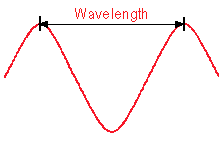



Section
8
Safety
Working with RF
8D1 Recall that the main health effect of exposure to electromagnetic radiation is heating of body tissue and that the eyes are particularly susceptible to damage.
What is electromagnetic radiation please ? asked one student the other night. So here is the answer:-
As a Foundation Licence holder, if you have been operating your transceiver then you have been using electromagnetic radiation. In fact when you have been listening to the broadcast radio, watching the television or even cooking in your microwave cooker you have been using electromagnetic radiation one way or another. Electromagnetic wave is just a fancy way of saying radio waves but there are also many other wave that have names within the range of electromagnetic radiation as shown in the diagram below.

You can see now the change in frequency from say 1MHz at the radio to many many many Mhz at the gamma ray end. Note also the portion of the microwave just above radio and below infrared. Infrared is heat rays and microwave cooker do just that with slightly lower frequencies.
The only difference in the waves is their wave length.

So now you understand what electromagnetic radiation is the point here is to know that the main health effect of electromagnetic radiation is heating of body tissue just like you cook in a micro wave. Thus do not touch an antenna when in use and also do not get too near to them.
8D2 Recall that guidance on safe levels of RF radiation is available from government and international bodies, Health Security Agency and the International Commission on Non-Ionising Radiation Protection (ICNIRP).
Self explanatory.8D3 Recall what a waveguide is and why it is unwise to look down a microwave frequency waveguide or to stand close to or in front of high-gain antennas as they may be in use.

Photo of a waveguide.
Booklets can be obtained that give
information as to what are considered "safe" radiation levels. Such
booklets are available from government and international bodies (HPA
and ICNIRP).
The HPA Agency (Health Protection Agency) was established as a
non-departmental public body, replacing the National Radiological
Protection Board (HPA) and with radiation protection as part of
health protection incorporated in what is has to control.
So be aware that this change may not have filtered through to all
training courses.
8D4 Recall that antenna elements and other conductors carrying RF should not be touched whilst transmitting.
What are antenna elements ? These are the
wires or other metal parts that make up the antenna.
When you are transmitting the sole aim of the antenna is to radiate
your signal efficiently. To do this the RF signal will at times be
at high voltage and other high current along the antenna. There is
thus a danger of RF burns even at relatively low levels of operating
power.
Don't touch an antenna when it is being used to transmit a signal
Recall
that antennas should be mounted where people will not come into
accidental contact with them.
When you put up antennas, wires, feeders etc, outside think of the location and how they are fixed. Is the location suitable or could it be knocked by say a window cleaners ladder? If it were knocked would the fixing be secure enough to keep the antenna or / and cable in place?
Note: this does not apply to low powered devices such as hand-held equipment.
The origin of some of the text on this page is from the RSGB with additions by the web master